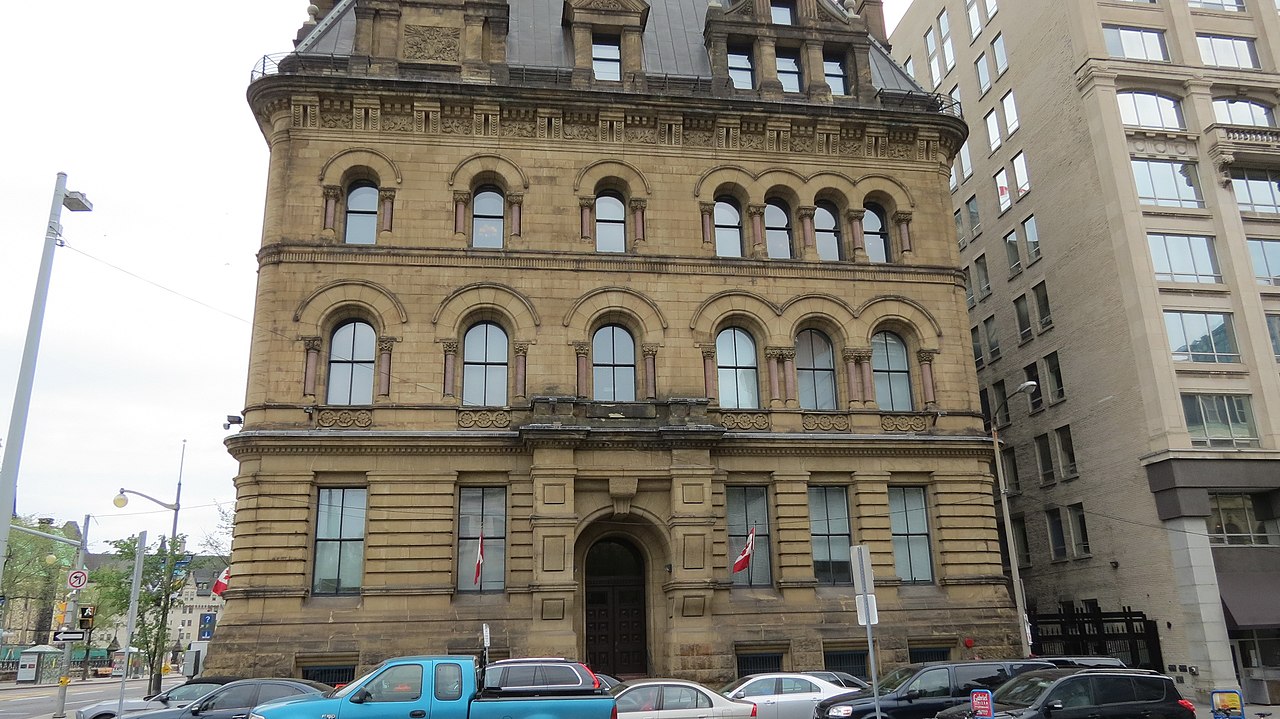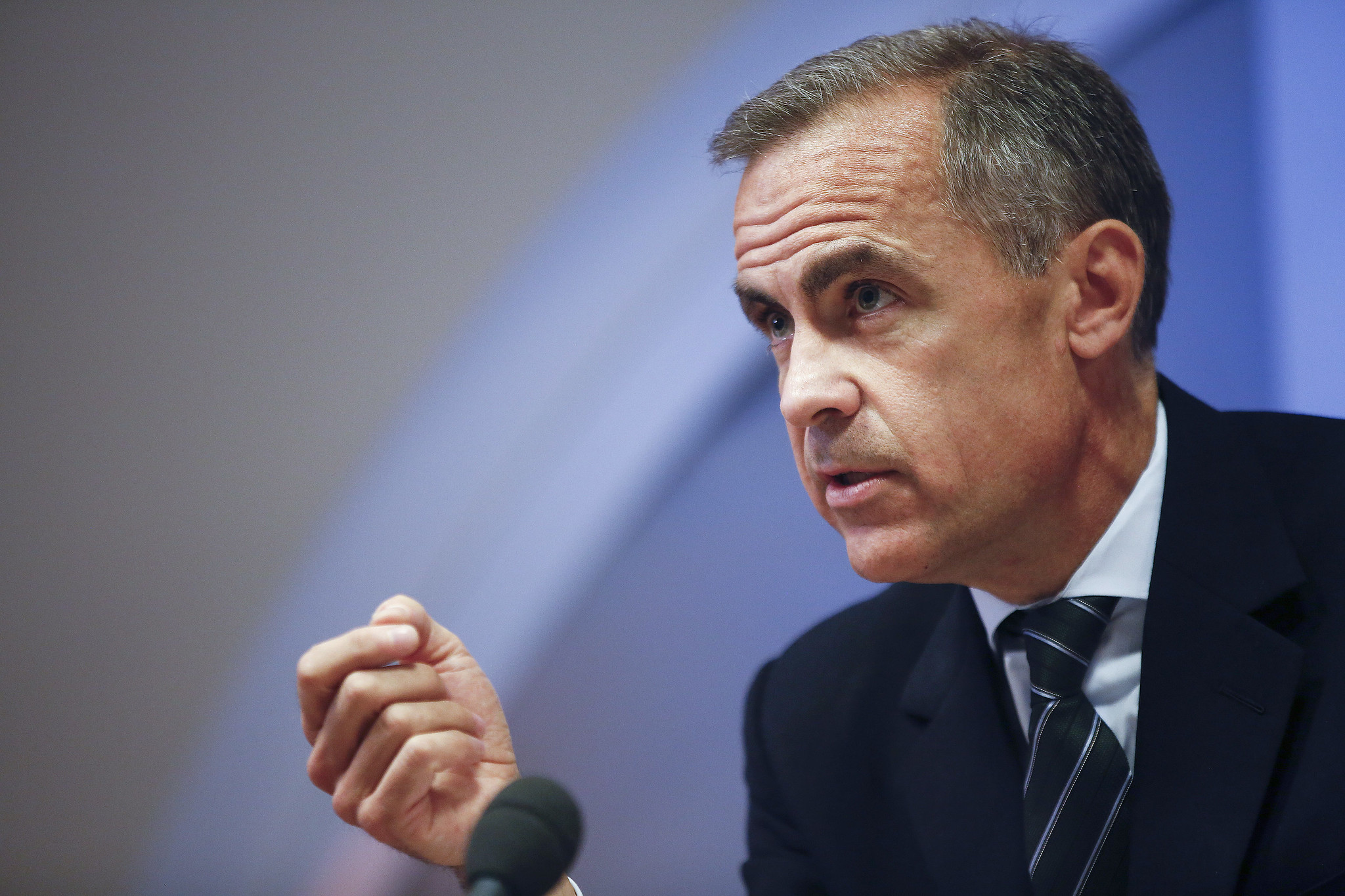The Cabinet is a committee of ministers. It holds executive power in government. This means it has the power to execute, or carry out, the government’s plans. Cabinets are chaired by the prime minister. In the provinces, they are chaired by the premier. Ministers typically come from the party with the most seats. They oversee major departments, such as finance, health, natural resources, etc. Cabinets are usually strong and driven by agreement. But some believe they have grown weaker as the Prime Minister’s Office (PMO) has grown stronger. The current cabinet, headed by Prime Minister Mark Carney, consists of 28 ministers and 10 secretaries of state. It was appointed on 13 May 2025.
This article is a plain-language summary of Cabinet. If you are interested in reading about this topic in more depth, please see our full-length entry, Cabinet.
Canada's 30th Cabinet
Prime Minister Mark Carney (centre L) and Governor General Mary Simon (centre R) pose for a group photo with the members of cabinet following their swearing-in ceremony at Rideau Hall in Ottawa, 13 May 2025.
(photo by Dave Chan, courtesy AFP via Getty Images)
How Cabinets Work
The Cabinet is also known as the “government-of-the-day.” It introduces and passes laws. It manages policies and goals. It also oversees government finances. The federal Cabinet gets its legal powers from the Privy Council. Cabinet acts in the name of the Crown. It consists of Members of Parliament (MPs). They are appointed by the prime minister to head departments. The Treasury Board is the only Cabinet committee formed by Parliament.
Cabinets have grown from 12 members to around 40. Various “junior ministers” are appointed to help ministers. The junior ministers are also called Secretaries of State. The Privy Council Office (PCO) provides the secretariat for Cabinet and its committees. Senior public servants also work in Cabinet. They are, however, excluded from Cabinet meetings.
Provincial Cabinets are formally known as executive councils. They follow the federal model except for some powers of appointment.
How Cabinets Are Made
Choosing a Cabinet is highly political. A PM tries to ensure that it represents the country’s different regions, languages and ethnic groups. If a ruling party fails to elect MPs in certain regions, the PM can appoint members of the Senate. A PM is also sure to include women, francophones, and Indigenous people. Major figures within the governing party are given high-profile roles in Cabinet. The PM seeks to maintain power by sharing it. They seek consensus within their party.
Secrecy
All Cabinet members are bound for life by the Privy Council oath of secrecy. Public statements by a minister are those of Cabinet. Ministers may disagree in public only after resigning from Cabinet.
The Official Secrets Act makes it illegal for public employees, opposition critics and journalists to go public with information seen as harmful to the state. The Act has also been used to protect Cabinet members.
Cabinet Power on the Rise
A Cabinet relies on its control over the governing party. Prime ministers often use patronage to ensure party loyalty. This includes appointment to Cabinet and committees.
The Cabinet has the power, through its majority in the House, to prevent votes to bring down the government. But the House’s ability to hold the executive to account is the basis of responsible government. The Cabinet can also govern by order-in-council. This began under Pierre Trudeau. It has only gained strength since then.
A large reason for such changes is the growing size of government. The idea that ministers are responsible for every facet of their department has come to be seen as unreasonable. As a result, some of that power is now given to unelected public servants. They do not sit in the House and cannot be held to account by its members.
Steps have been taken to address the power imbalance between Cabinet and Parliament. Committees have been given more power to track government activity. Freedom of Information laws have been passed. And in 2006, the Parliamentary Budget Office (PBO) was created. The PBO gives Parliament oversight on government spending.

Cabinet Power in Decline
Some fear that Cabinet has grown too powerful. But others believe that Cabinet is too heavily controlled by the PM and his office. Critics argue that plans and priorities are set in the Prime Minister’s Office (PMO) by the leader and his unelected staff. They are then given to Cabinet members for rubber-stamping.
Stephen Harper was often criticized for keeping too much power in the PMO. His Cabinet ministers and their staffs could not speak to the media without approval from the PMO. The power balance between Cabinet and the PMO also came under scrutiny under PM Justin Trudeau. This was most true during the SNC-Lavalin affair. In February 2019, Jody Wilson-Raybould and Jane Philpott resigned from Cabinet. Wilson-Raybould claimed the PMO and other staff pressured her to work out a deal with SNC-Lavalin. The ethics commissioner found that Trudeau had breached conflict of interest law.
See also Member of Parliament (MP) (Plain-Language Summary); Prime Minister of Canada (Plain-Language Summary).
Current Federal Cabinet
|
Ministry |
Minister |
Constituency |
|
Nepean, ON |
||
|
Canada-U.S. Trade, Intergovernmental Affairs and One Canadian Economy and President of the King’s Privy Council for Canada |
Beauséjour, QC |
|
|
Finance and National Revenue |
François-Philippe Champagne |
Saint-Maurice—Champlain, QC |
|
Anita Anand |
Oakville East, ON |
|
|
Justice and Attorney General and the Atlantic Canada Opportunities Agency |
Sean Fraser |
Central Nova, NS |
|
Industry and Canada Economic Development for Quebec Regions |
Mélanie Joly |
Ahuntsic—Cartierville, QC |
|
Transport and Internal Trade |
University—Rosedale, ON |
|
|
Rebecca Alty |
Northwest Territories |
|
|
David J. McGuinty |
Ottawa South, ON |
|
|
Veterans Affairs and Associate Minister of National Defence |
Jill McNight |
Delta, BC |
|
Housing and Infrastructure and Pacific Economic Development Canada |
Vancouver Fraserview—South Burnaby, BC |
|
|
Government Transformation, Public Works and Procurement |
Joël Lightbound |
Louis—Hébert, QC |
|
Immigration, Refugees and Citizenship |
Lena Metlege Diab |
Halifax West, NS |
|
Leader of the Government in the House of Commons |
Steven MacKinnon |
Gatineau, QC |
|
Canadian Identity and Culture and Official Languages |
Laurier—Sainte-Marie, QC |
|
|
Mandy Gull-Masty |
Abitibi–Baie-James–Nunavik–Eeyou, QC |
|
|
Marjorie Michel |
Papineau, QC |
|
|
Jobs and Families and the Federal Economic Development Agency for Northern Ontario |
Patty Hajdu |
Thunder Bay—Superior North, ON |
|
Arctic Affairs and the Canadian Northern Economic Development Agency |
Rebecca Chartrand |
Churchill—Keewatinook Aski, MB |
|
Public Safety |
Gary Anandasangaree |
Scarborough—Guildwood—Rouge Park, ON |
|
Treasury Board President |
Shafqat Ali |
Brampton—Chinguacousy Park, ON |
|
Fisheries |
Joanne Thompson |
St. John’s East, NL |
|
Environment and Climate Change |
Julie Dabrusin |
Toronto—Danforth, ON |
|
Energy and Natural Resources |
Tim Hodgson |
Markham–Thornhill, ON |
|
Agriculture and Agri-Food |
Heath MacDonald |
Malpeque, PEI |
|
Emergency Management and Community Resilience and Prairies Economic Development Canada |
Eleanor Olszewski |
Edmonton Centre, AB |
|
International Trade |
Maninder Sidhu |
Brampton East, ON |
|
Women and Gender Equality and Secretary of State (Small Business and Tourism) |
Mississauga—Streetsville, ON |
|
|
Artificial Intelligence and Digital Innovation and the Federal Economic Development Agency for Southern Ontario |
Evan Solomon |
Toronto Centre, ON |

 Share on Facebook
Share on Facebook Share on X
Share on X Share by Email
Share by Email Share on Google Classroom
Share on Google Classroom






